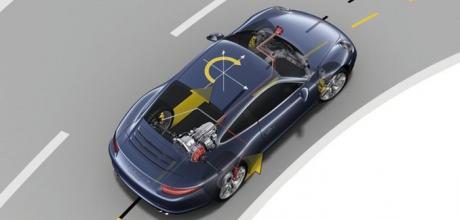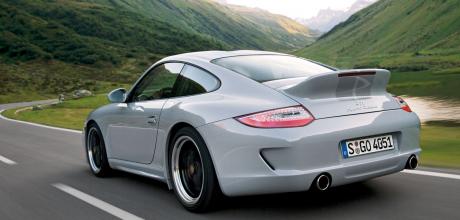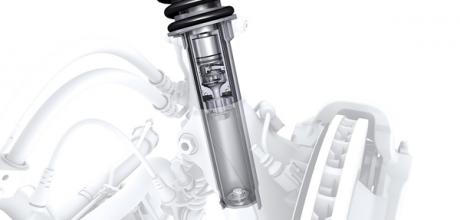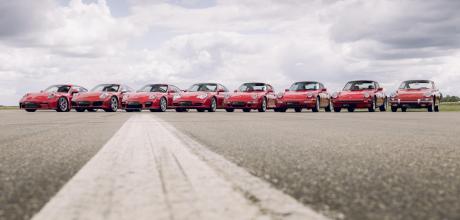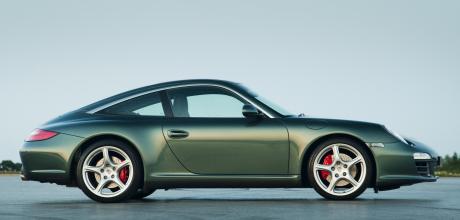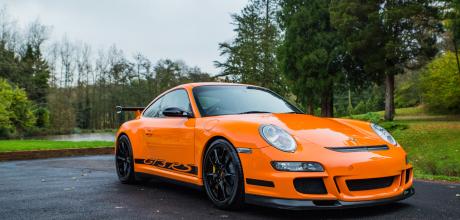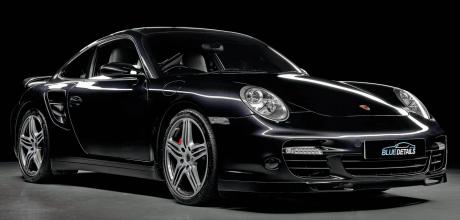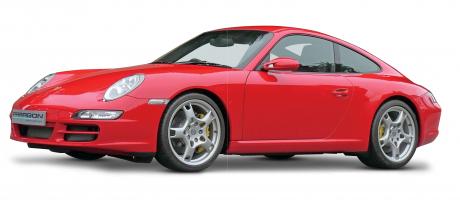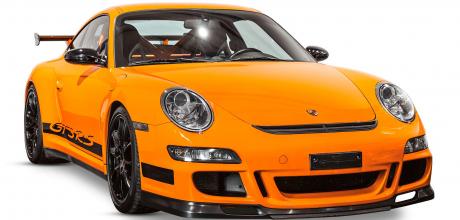 Porsche 911 997 · Blog
Porsche 911 997 · Blog
Discover how the Porsche Torque Vectoring system helps to keep your 911 on the road. The driving characteristics of the 911 are well known, if something of a dichotomy. The rear-engined layout permits immense traction out of corners, but at the same time the car is ever-ready to punish driving with less-than-perfect technique. Carry too much speed into a corner, lift off and you have all the ingredients of the classic 911 accident for the inexperienced.
Porsche 911 997 → Sales debate - how much compromise is involved in finding your perfect Porsche 911?
Tracking down your dream 911 can be a less-than-straightforward process. In our heads it’s relatively easy to draw up a wish list of our ideal car, but then we have to find one in the real world. Inevitably, that perfect set of demands may not be for sale. How much compromise should we factor in when searching for ‘The One’? Avantgarde Classic’s Jonathan Aucott is quick to point out that compromise is somewhat inevitable with used 911 purchases.
Porsche 911 997 → Porsche’s ace test specialist Walter Röhrl (right), but board member for R&D, Wolfgang Hatz
With its combination of electric and petrol V8 traction, the 887hp 918 hypercar was the most powerful Porsche yet. It also had the longest introduction of any Porsche, because the company was determined to get this complex car right first time. A measure of this concern is visible in the photograph.
First introduced on the Porsche 911 997 Carrera S in 2005, Porsche Active Suspension Management (PASM) was created to give the best of both worlds at the press of a button, to the driver’s choosing: maximum comfort, or maximum dynamics. Technology explained PASM To understand the technology, we must step back and look at how suspension works. At its core, a suspension’s job is to keep the tyres on the road.
Buyers who can nail down their dream 911 and spec have an easy ride when purchasing. They search, wait and hopefully find. However, not everyone can pinpoint their next 911 so readily. With this in mind, we asked our trade experts what sort of budget gives you the greatest choice of 911 models, as a used purchase? After only the briefest of pauses, Jonathan Ostroff, sales manager at Hexagon Classics, is straight on a figure to work with: “£65,000” he says.
The 997 Targa. Chances are you forgot about that one, and indeed the 996 before it. Porsche took a bit of a diversion with the Targa version of the 993, 996 and 997, with these models not coming with the immediate Targa signifier of a rollover bar and expansive wraparound rear glass. The 991 would return to that format, with some added opening and closing automated theatrics, all of which leaves those interim Targa models somewhat overlooked.
Adverts that mention Cat C or Cat D are referring to Category Markers, issued after a vehicle has an insurance claim. When a car is damaged, the insurer decides if it’s worth repairing or not. If it isn’t repaired, the owner is paid out, the car is written off and the insurer applies a Category marker to it. Previously, they were Cat C and Cat D, but these were replaced in 2017 with S and N.
The 997.1 was the last Turbo that could trace its origins to the original 930, and makes for a great-value buy today. Total 911 presents everything you need to know about it… Written by Kieron Fennelly. Photography by Damian Blades. HISTORY AND TECHThe first-generation 997 inherited its engines from the 996.
It’s arguably the best-value Porsche 911 right now, so here’s everything you need to know about buying a £25k 997.1 C2S. Written by Kieron Fennelly.
A largely undervalued modern Rennsport, the 997.1 represents a surefooted investment right now. Here’s everything you need to know about it index: 997.1 GT3 RS Written by Kieron Fennelly Porsche Index: 997.1 GT3 RS Your ultimate guide to the most underrated Rennsport of the modern era HISTORY AND TECH The 997 GT3 was launched at Geneva in March 2006 and, as with its 996 GT3 and 993/964 RS predecessors, it was designed to homologate the 997 for the Porsche Cup and from 1999, GT3 class.


